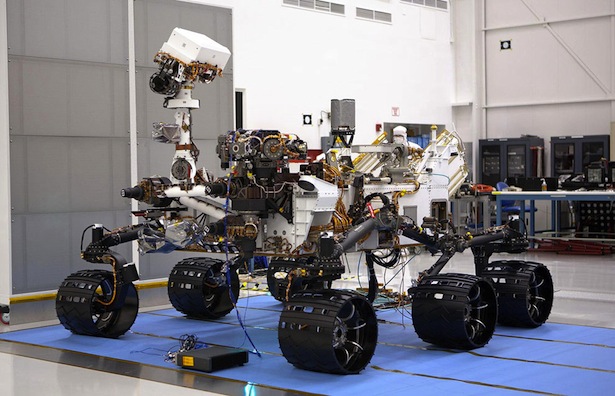Life on Mars?
We’ve landed things on Mars before, but never like this. The landing of NASA’s Curiosity Rover at around 6.30am this morning was an awesome feat of engineering, delivering a 1 tonne buggy loaded with state-of-the-art technology to an awkward dry planet after a journey of over 550 million kilometres. Its mission? To begin the search for life on Mars.
Here’s what we know so far: Mars is the most hospitable planet in our solar system besides Earth and, in its very early history, was in fact very earthlike. Oxygen, Nitrogen, Phosphorous, Sulphur, Hydrogen, Carbon; all of the requisite elements for life, as we know it, have been detected on the red planet. Yet on the surface, Mars is not a welcoming place. Because of the thin atmosphere, the planet has very low pressure; so low that water cannot form as a liquid. Were a human to walk on the surface of Mars, his or her blood and saliva would start boiling in less than a minute. Even though the polar caps wax and wane with the seasons just like here on earth, the ice evaporates causing 100% humidity rather than forming seas, rivers and oceans. Still, we do know that water flowed on the surface of Mars at some point. More than 10,000 riverbeds have been photographed, leaving behind deposits of minerals have left veins for us to see and gulleys that must have been formed by moving water.
Water is one thing, but to support any sort of organism temperatures need to be within the right range. Again, we humans would find it pretty unbearable on Mars. On a summer’s day at the equator you might enjoy a pleasant 20 degrees Centigrade, but it doesn’t last long. As the evening rolls in, even when Mars is closest to the sun temperatures plummet to -73C. At the polar caps, it can sink to -125C. As cold as it sounds, we know of complex organisms, not just bacteria or viruses, actual animals that have survived even absolute zero.
There is one other mystery that bodes well for the presence of life: methane. Plumes of the gas have been detected on Mars and the best possible guess is that organic life is responsible for it. Methane is most commonly produced by living things (like us!) and it’s possible this methane may have been produced by organisms hiding under the surface of Mars, although water interacting with volcanic rock could also be an explanation.
So, to recap, we have sun, water and all of the elements and minerals required for life. All of these things lead us to believe that there’s a 50/50 chance that we will, one day, find some evidence of organic life on Mars.
The problem is that, despite all the hype, Curiosity isn’t really looking for life, it’s checking habitability, for us as well as for aliens. Its main mission is to examine rock composition, measure radiation, pressure, humidity, wind speed and direction, air temperature, ground temperature and radiation. It will look for ice and mineral compounds and take samples. All of the above will help geologists form a better idea of the history of Mars atmosphere, and will surely give us a much better idea of where we might look to find life, but none are likely to give us images of an ET, unless it happens to walk right into shot.
